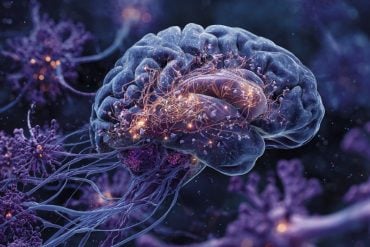Summary: A new study finds that individualistic reward-seeking behaviors in mice can predict their responses to nicotine. Conducted in a semi-natural environment called Souris-City, the research observed how male mice developed distinct reward-seeking strategies when isolated from peers.
These strategies were linked to differences in personality and dopamine system activity, influencing nicotine susceptibility. The findings suggest that environmental factors shape behavioral traits, which may be key in understanding addiction. The study highlights how individual variability can be crucial in addiction research.
Key Facts:
- Mice showed distinct reward-seeking behaviors predicting nicotine sensitivity.
- Individual differences were linked to dopamine system activity and personality.
- Environmental factors play a role in shaping addiction susceptibility.
Source: PLOS
Individualistic reward-seeking strategies predict responses to nicotine among mice living in a micro-society, according to a study publishing October 24th in the open-access journal PLOS Biology by Philippe Faure from PSL Research University, France, and colleagues.
Individual animals differ in their traits and preferences, which shape their social interactions, survival, and susceptibility to disease, including addiction. Nicotine use is highly variable and has been linked to personality traits.

Although these relationships are well documented, relatively little is known about the neurophysiological mechanisms that give rise to distinct behavioral profiles and their connection to nicotine susceptibility.
To address this question, Faure and colleagues conducted a study using a semi-natural social environment called Souris-City to observe the long-term behavior of individual male mice.
Souris-City provided both a communal living area and a separate test area where mice engaged in a reward-seeking task isolated from their peers. In this environment, mice gained individual access to water by performing a specific task in a T-maze, while social, circadian, and cognitive behaviors were continuously monitored over time using multiple sensors.
The mice developed individualistic reward-seeking strategies when choosing between water and sucrose in the test compartment, which in turn predicted how they adapted to the introduction of nicotine as a reward.
Moreover, the profiles mice developed while isolated in the test area correlated with their behavior within the social environment. The inter-individual differences in decision-making strategies were linked to variations in personality and in the activity of the dopamine system.
Taken together, the findings suggest that environmental adaptations influence behavioral traits and sensitivity to nicotine by acting on dopaminergic activity in response to nicotine exposure, potentially contributing to addiction susceptibility.
As noted by the researchers, these results suggest that animals adopt distinct foraging strategies in complex social environments. These strategies reflect individual traits and the state of neural circuits, and an individual’s strategy can be indicative of their response to addictive substances.
Overall, the study highlights how harnessing inter-individual variability in behavior and its underlying mechanisms, particularly in the context of addiction research, can unravel more complex and nuanced relationships between neural circuits and behavior than would be possible by assuming that all mice should respond uniformly to a task.
According to the authors, the use of large naturalistic environments with automated data capture provides a valuable tool for studying susceptibility to substance abuse. Ultimately, this study could pave the way for research leading to more targeted and personalized approaches to addiction research and behavioral intervention.
The authors add, “Our study highlights how individual differences in reward-seeking behavior are shaped by social environments and directly influence nicotine sensitivity.”
About this reward-seeking and behavioral neuroscience research news
Author: Claire Turner
Source: PLOS
Contact: Claire Turner – PLOS
Image: The image is credited to Neuroscience News
Original Research: Open access.
“Individualistic reward-seeking strategies that predict response to nicotine emerge among isogenic male mice living in a micro-society” by Philippe Faure et al. PLOS Biology
Abstract
Individualistic reward-seeking strategies that predict response to nicotine emerge among isogenic male mice living in a micro-society
Individual animals differ in their traits and preferences, which shape their social interactions, survival, and susceptibility to disease, including addiction. Nicotine use is highly heterogenous and has been linked to the expression of personality traits.
Although these relationships are well documented, we have limited understanding of the neurophysiological mechanisms that give rise to distinct behavioral profiles and their connection to nicotine susceptibility.
To address this question, we conducted a study using a semi-natural and social environment called “Souris-City” to observe the long-term behavior of individual male mice. Souris-City provided both a communal living area and a separate test area where mice engaged in a reward-seeking task isolated from their peers.
Mice developed individualistic reward-seeking strategies when choosing between water and sucrose in the test compartment, which, in turn, predicted how they adapted to the introduction of nicotine as a reinforcer.
Moreover, the profiles mice developed while isolated in the test area correlated with their behavior within the social environment, linking decision-making strategies to the expression of behavioral traits. Neurophysiological markers of adaptability within the dopamine system were apparent upon nicotine challenge and were associated with specific profiles.
Our findings suggest that environmental adaptations influence behavioral traits and sensitivity to nicotine by acting on dopaminergic reactivity in the face of nicotine exposure, potentially contributing to addiction susceptibility.
These results further emphasize the importance of understanding interindividual variability in behavior to gain insight into the mechanisms of decision-making and addiction.






